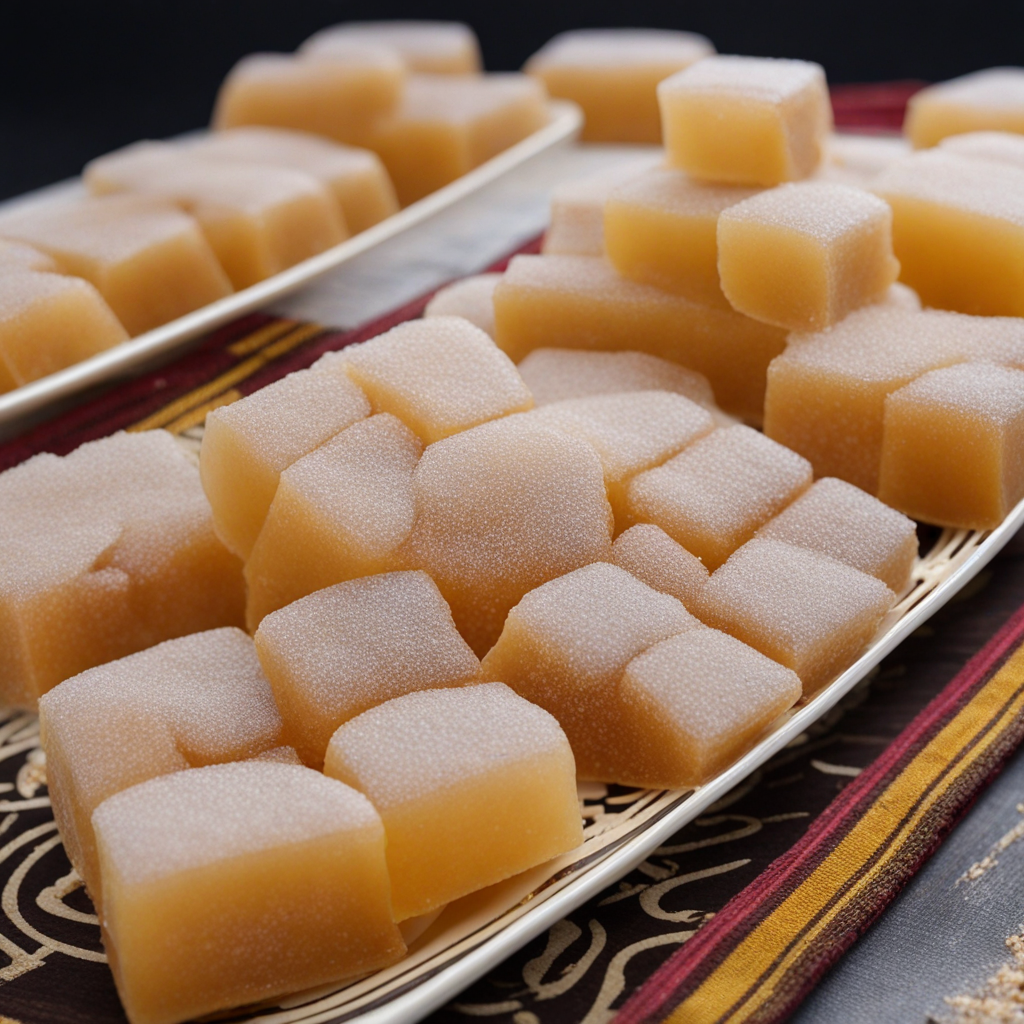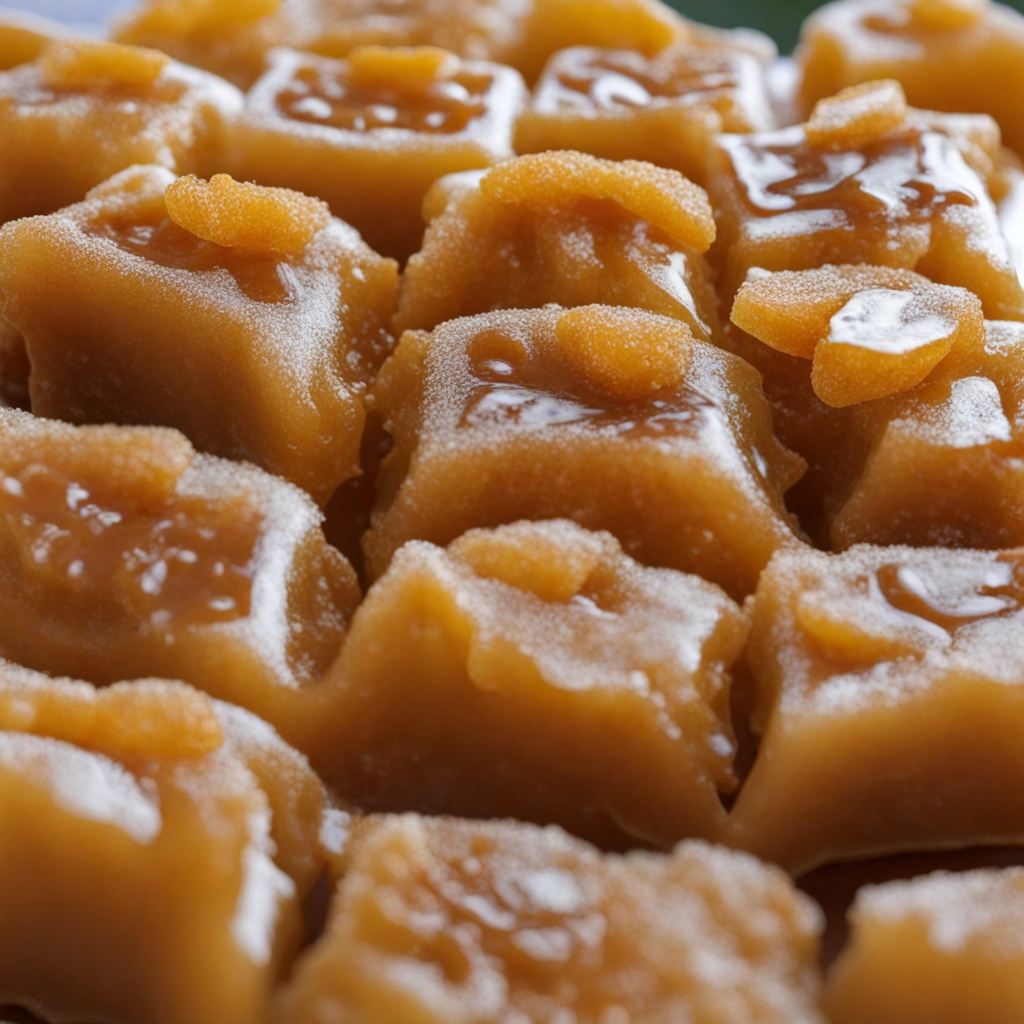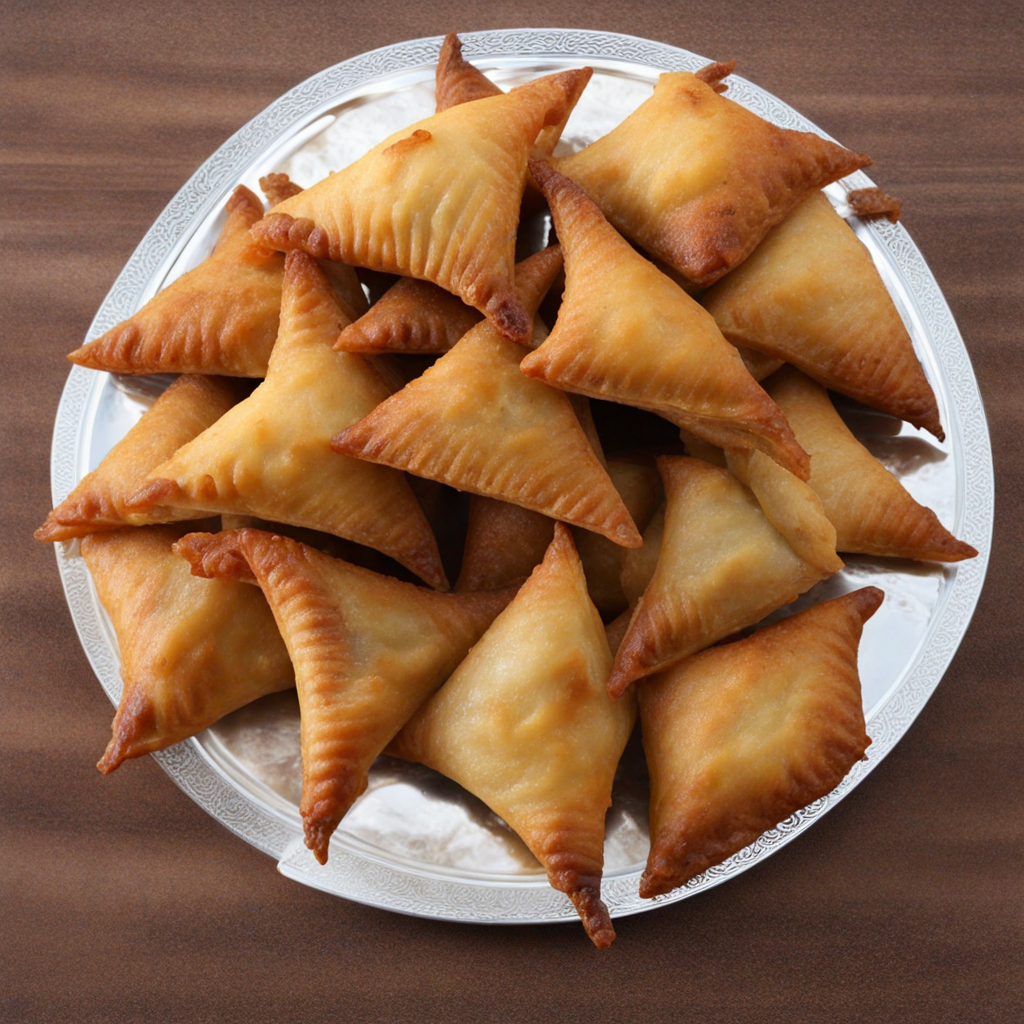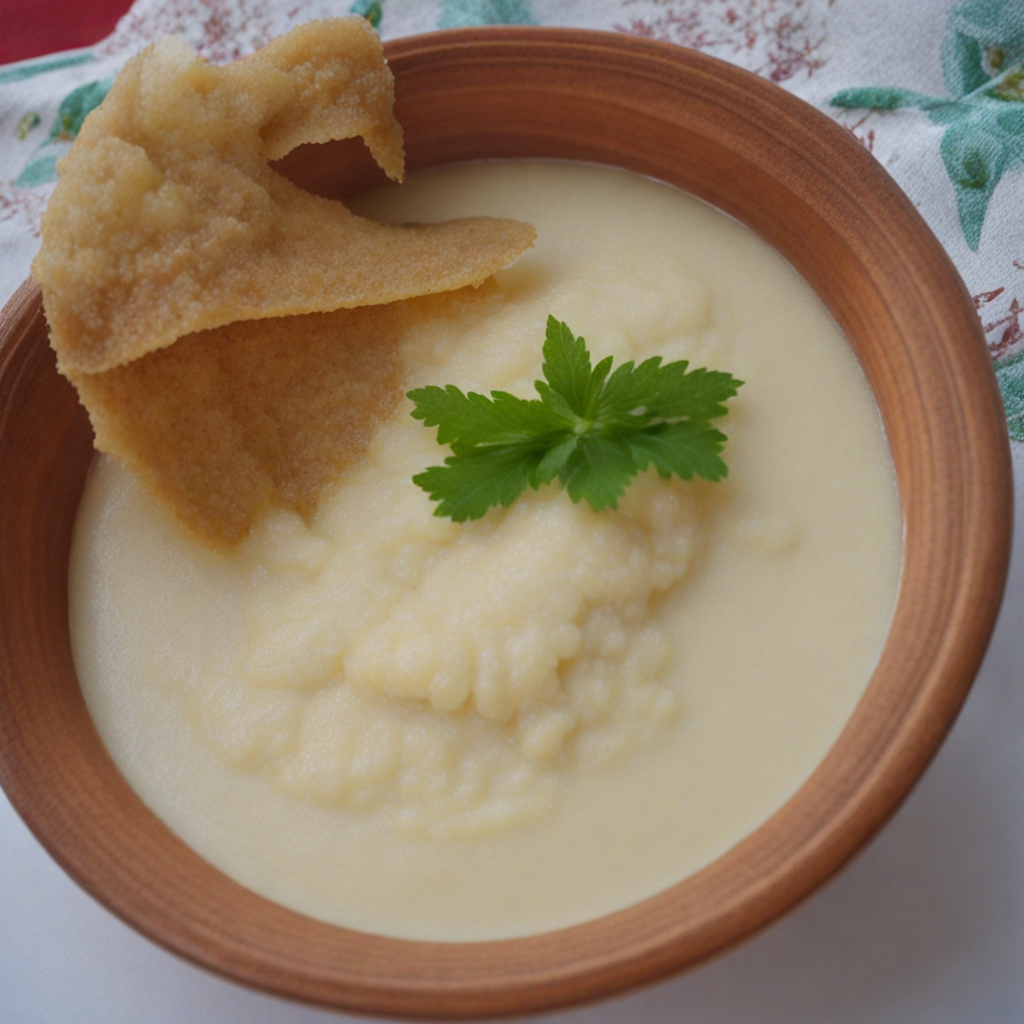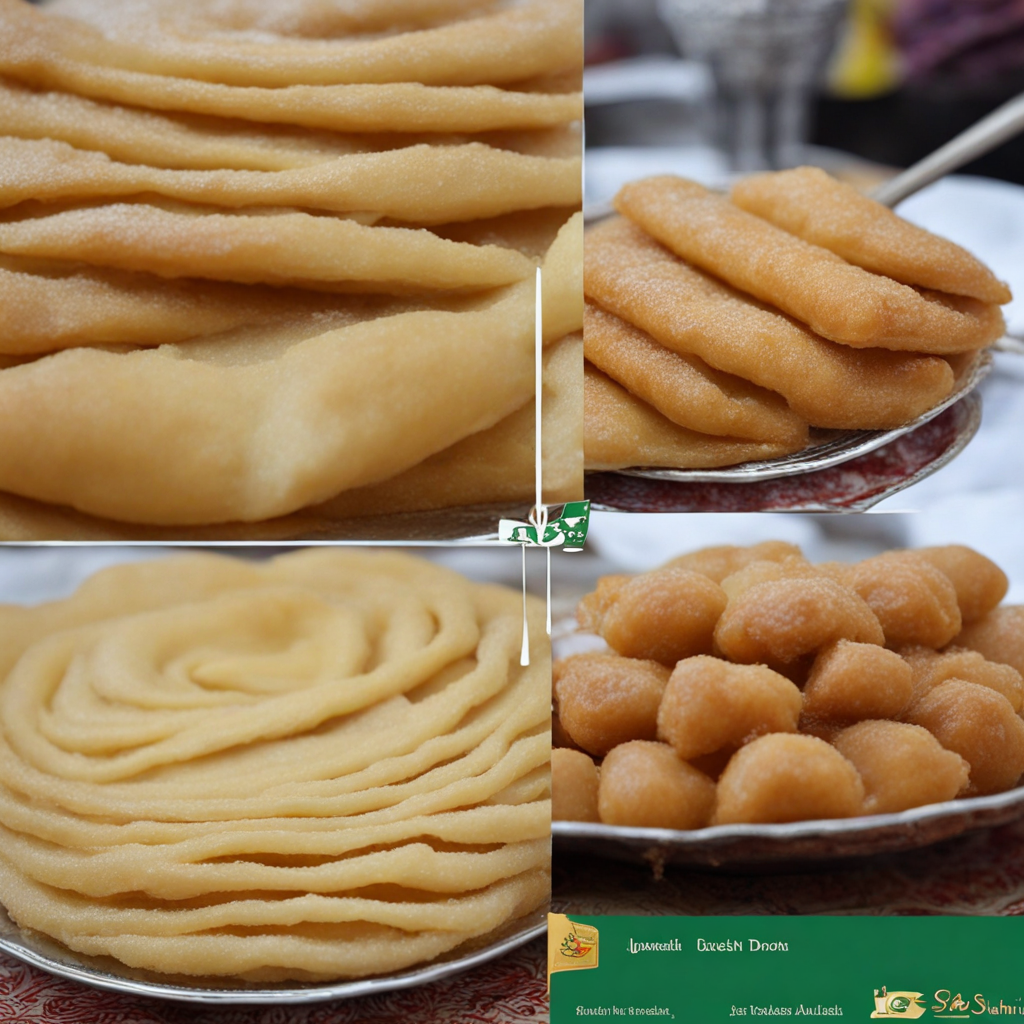Halwo
Halwo is a delightful Djiboutian delicacy that embodies the rich culinary heritage of the region. This traditional sweet treat is primarily made from a blend of ingredients such as sugar, cornstarch, and ghee, resulting in a pleasantly smooth and dense texture. The dish is often flavored with cardamom, which imparts a warm and aromatic essence, and sometimes enhanced with the addition of nuts or dried fruits, offering a satisfying crunch and a burst of sweetness. The golden hue of Halwo is not only visually appealing but also hints at the rich, indulgent flavors waiting to be savored. The preparation of Halwo is an art that requires patience and skill. The cooking process involves heating the ghee before gradually incorporating sugar and cornstarch, stirring continuously to achieve the desired consistency. Once the mixture thickens, it's poured into a mold to set, creating a firm yet tender confection. After cooling, it is often cut into bite-sized pieces, making it perfect for sharing during celebrations or family gatherings. Each bite of Halwo is a harmonious blend of sweet and savory notes, with the silky texture melting in your mouth, leaving a lingering warmth from the spices. Halwo is not just a treat; it is a cultural symbol in Djibouti, often enjoyed during special occasions such as weddings, religious festivals, and family gatherings. The sweet is a favorite among locals and visitors alike, serving as a reminder of the country's rich traditions and communal spirit. For those looking to explore new flavors, Halwo offers a unique experience that combines simplicity and elegance, making it a must-try for anyone interested in the diverse world of global cuisine.
How It Became This Dish
The Sweet Journey of حلو: A Culinary Treasure from Djibouti #### Origins of حلو The term 'حلو' (pronounced 'halwa') in Djibouti refers to a traditional sweet treat that has deep-rooted connections to the region's cultural and historical tapestry. The origins of حلو can be traced back to the broader culinary traditions of the Horn of Africa and the Arabian Peninsula, where diverse influences, including Persians, Turks, and Arabs, have shaped the local palate over centuries. Djibouti, strategically located at the entrance of the Red Sea, has long been a melting pot of cultures, due to its position as a trading hub. This convergence of peoples brought with it a variety of culinary practices, with sweets playing a pivotal role in social rituals and celebrations. The earliest forms of حلو might have been simple, made with local ingredients like dates, honey, and nuts. Over time, these basic recipes evolved, incorporating spices and other elements that reflect the broader culinary heritage of the region. #### Cultural Significance In Djibouti, حلو is more than just a dessert; it is an integral part of the country’s cultural identity. It is commonly served during religious celebrations, weddings, and communal gatherings, acting as a symbol of hospitality and generosity. The preparation and sharing of حلو often signify important social bonds and the passage of traditions from one generation to the next. The sweet treat also plays a significant role in Islamic culture, particularly during Ramadan, when it is common to break the fast with a variety of sweets. حلو, with its rich flavors and festive presentation, complements the spirit of celebration that permeates this holy month. In addition, it is often found during Eid celebrations, where families come together to share meals and sweets, marking the end of fasting with joy and abundance. #### Varieties and Ingredients The traditional preparation of حلو in Djibouti can vary significantly, with different families and regions having their unique recipes. However, several key ingredients are commonly used across many versions. The base often includes semolina or flour, which is then cooked with ghee or butter. Sweeteners such as sugar or honey are added to create a rich and decadent flavor profile. Spices like cardamom, saffron, and cinnamon are frequently incorporated, adding depth and warmth to the dish. Nuts—particularly almonds, pistachios, and walnuts—are often sprinkled on top or mixed into the batter, contributing a delightful crunch and enhancing the overall taste experience. Some variations might include dried fruits, which add a natural sweetness and chewy texture. The preparation of حلو is not merely about combining ingredients; it is a labor of love. The process often entails slow cooking and careful stirring to achieve the right consistency. Once cooked, the mixture is poured into a mold or dish, allowed to set, and then cut into pieces. The presentation of حلو is equally important, often adorned with colorful sprinkles or additional nuts, making it visually appealing. #### Evolution Over Time As Djibouti has grown and changed, so too has the tradition of making حلو. The influence of globalization and migration has introduced new flavors and techniques, while still maintaining the essence of traditional preparation. In contemporary Djibouti, you may find modern interpretations of حلو, with chefs experimenting with fusion variations that incorporate international flavors or adapt to contemporary dietary preferences. The rise of social media has also played a role in the evolution of حلو. As more people share their culinary creations online, traditional recipes are being revived and reinterpreted, often leading to a renewed interest in local dishes. This sharing of food culture has fostered a sense of pride among Djiboutians, allowing them to connect with their roots while also embracing new influences. Moreover, the increasing popularity of Djiboutian cuisine in the global culinary scene has brought attention to حلو and other traditional sweets. Restaurants and food festivals around the world now feature Djiboutian dishes, allowing a broader audience to appreciate the rich flavors and cultural significance of these culinary treasures. #### Challenges and Preservation Despite its cultural importance, the art of making حلو, along with other traditional foods, faces challenges in the modern world. The shift towards fast food and convenience meals has led to a decline in home cooking practices among younger generations. This trend poses a risk to the preservation of traditional recipes and cooking techniques that have been passed down through families for generations. In response to these challenges, various initiatives are being launched in Djibouti to promote traditional cooking. Cooking classes, food festivals, and cultural events are being organized to engage younger generations and ensure that the knowledge of making حلو and other local delicacies is not lost. These efforts aim to instill a sense of pride in their culinary heritage while adapting it to modern tastes and lifestyles. #### Conclusion حلو from Djibouti is more than just a sweet treat; it is a reflection of the country’s rich history and cultural identity. From its origins rooted in trade and cultural exchange to its significance in social and religious celebrations, حلو encapsulates the essence of Djiboutian hospitality. As the world continues to change, the evolution of حلو represents both the resilience of tradition and the adaptability of culture. By embracing its culinary heritage while also welcoming new influences, Djibouti ensures that حلو remains a cherished part of its identity, sweetening lives with the flavors of the past and present. The journey of حلو is a testament to the enduring power of food as a connector of people, a bearer of stories, and a celebration of culture.
You may like
Discover local flavors from Djibouti


